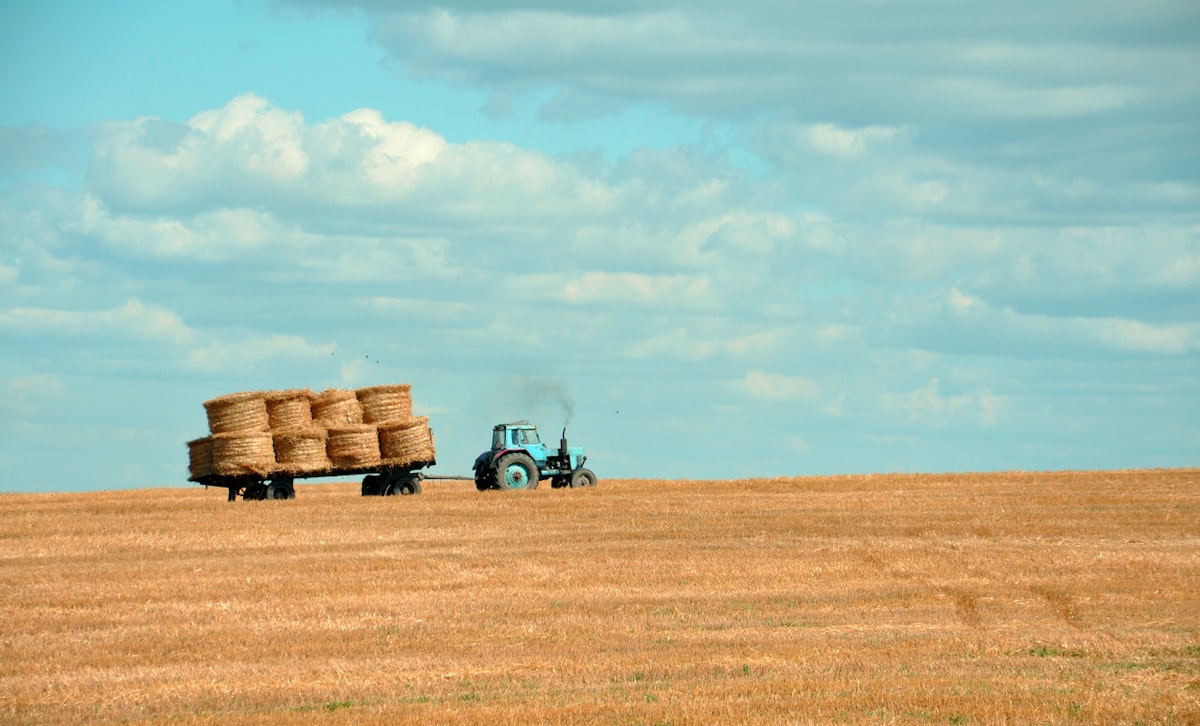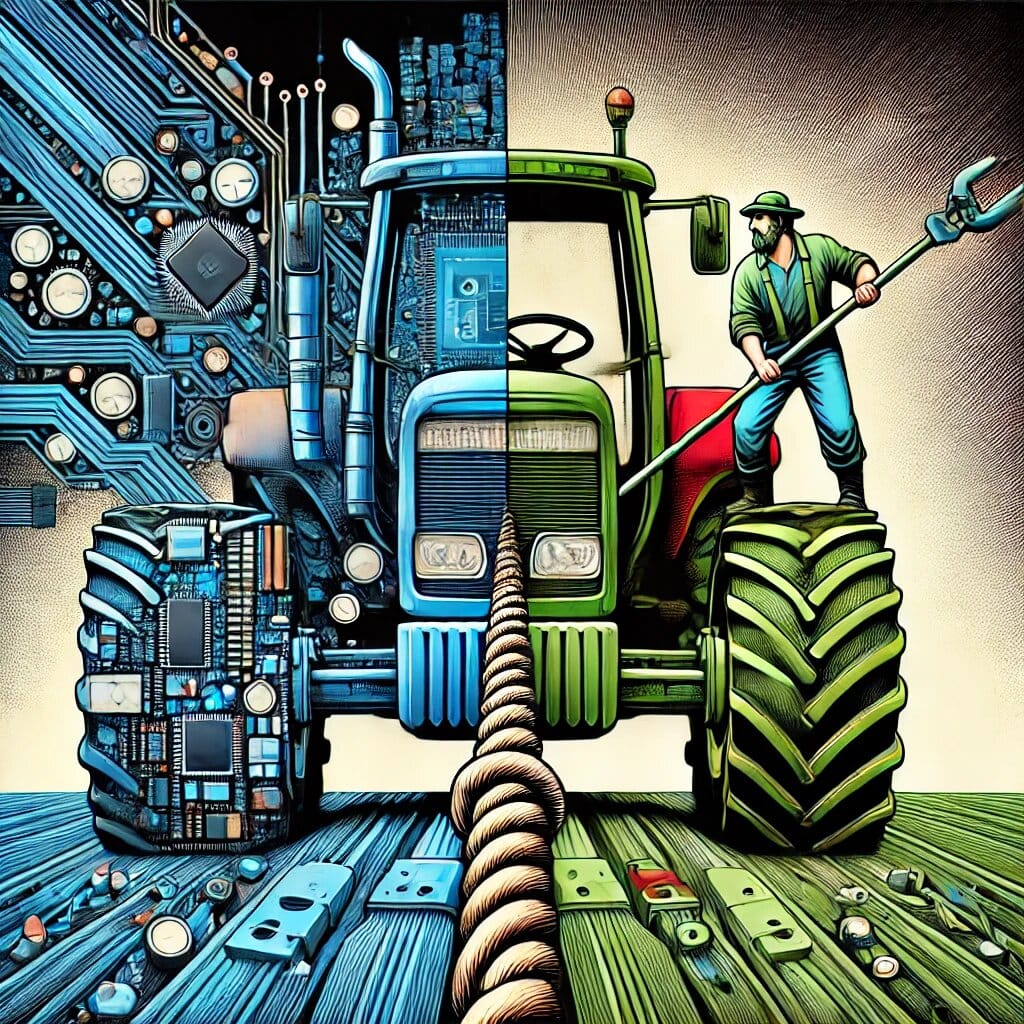ISO 24882: Addressing Cybersecurity Challenges in Agricultural Machinery and Tractors

Introduction
In an era where digital transformation is revolutionizing every industry, agriculture stands at a critical junction. Modern farms increasingly rely on smart technologies, connected machinery, and data-driven decision-making systems. However, this technological evolution has introduced new vulnerabilities to the agricultural sector. As tractors, harvesters, and other farm equipment become integrated with electronic systems and internet connectivity, they present potential targets for cyber threats.
To address these emerging challenges, the International Organization for Standardization (ISO) is developing ISO 24882, "Agricultural Machinery and Tractors — Cybersecurity Engineering." This standard aims to establish comprehensive cybersecurity requirements specifically tailored to the agricultural sector's unique needs. Currently in the committee draft (CD) stage of development, ISO 24882 represents a significant step toward securing the future of digital agriculture.

Current Status and Development Timeline
ISO 24882 is currently in the committee draft (CD) stage of development, with the CD consultation initiated on January 6, 2025. The standard is being developed under the technical committee ISO/TC 23/SC 19, which focuses on agricultural electronics. The development timeline has progressed through several stages since its approval:
- New project approved: January 8, 2024
- Working draft (WD) study initiated: April 25, 2024
- Working draft approved for registration as CD: September 9, 2024
- Committee draft registered: January 6, 2025
The standard is still under development and has not yet reached the final stages of approval. The timeline for when a standard becomes effective can vary depending on the progress of the drafting, review, and approval processes.
Scope and Objectives of ISO 24882
ISO 24882 specifies engineering requirements for cybersecurity risk assessment regarding concept, product development, production, operation, maintenance, and decommissioning of electrical and electronic (E/E) systems in Agricultural Machinery & Tractors, including their components and interfaces.
The primary objectives of the standard include:
- Establishing a framework for cybersecurity processes throughout the entire lifecycle of agricultural machinery
- Creating a common language for communicating and managing cybersecurity risk
- Addressing the cybersecurity perspective in engineering of electrical and electronic systems within agricultural machinery and tractors
- Ensuring appropriate consideration of cybersecurity to keep up with evolving technology and attack methods
- Providing vocabulary, objectives, requirements, and guidelines related to cybersecurity engineering as a foundation for common understanding throughout the supply chain
Key Components of ISO 24882
Lifecycle Approach
ISO 24882 takes a comprehensive lifecycle approach to cybersecurity in agricultural machinery. The entire life cycle of agricultural machinery is taken into account – from development and production through to maintenance and decommissioning. This approach ensures that cybersecurity remains a priority at every stage of a product's existence, not just during its initial development.
The lifecycle stages addressed include:
- Concept and Design: Integrating security by design principles from the earliest stages of product development
- Product Development: Implementing security requirements into hardware, software, and communication interfaces
- Production: Establishing secure manufacturing processes
- Operation: Ensuring secure functionality during normal usage
- Maintenance: Maintaining security through updates and servicing
- Decommissioning: Securely retiring products at the end of their useful life
Risk Assessment Framework
One of the key points is the performance of risk assessments during the design and development of new machinery. These assessments help OEMs to identify potential vulnerabilities at an early stage and take appropriate countermeasures.
The risk assessment framework includes:
- Methodologies for identifying threats and vulnerabilities
- Approaches for evaluating the likelihood and impact of potential security breaches
- Guidelines for prioritizing risks based on severity
- Strategies for implementing appropriate countermeasures
Security Requirements
The standard establishes specific security requirements for various components of agricultural machinery, including:
- Hardware Security: Physical protection measures for electronic components
- Software Security: Secure coding practices, authentication mechanisms, and update procedures
- Communication Security: Protocols for secure data transmission between components and external systems
- Data Protection: Measures to ensure the confidentiality, integrity, and availability of sensitive agricultural data
Relationship with Other Standards and Regulations
Comparison with ISO/SAE 21434
ISO 24882 shares similarities with ISO/SAE 21434, which focuses on cybersecurity engineering for road vehicles. While both standards follow similar approaches – such as emphasizing safety measures over the entire life cycle – there are significant differences. For example, ISO/WD 24882 places a particular focus on the unique challenges of agriculture, such as operating in remote rural areas and the limited connectivity of many machines.
These agricultural-specific challenges include:
- Operations in isolated or rural environments with limited connectivity
- Seasonal usage patterns that affect update schedules
- Integration with other farm systems and data platforms
- Unique environmental conditions that affect hardware durability
Alignment with EU's Cyber Resilience Act (CRA)
With the increasing importance of the Cyber Resilience Act (CRA) at a European level, ISO/WD 24882 is becoming the global benchmark paving the way for secure agricultural operations. The standard complements the CRA by providing sector-specific guidelines for agricultural machinery, while the CRA establishes a broader framework for all digital products.
Relationship with UNECE WP.29 R155
While R155 provides a broader, regulatory framework, ISO/WD 24882 could offer more detailed, technical guidance tailored to the unique needs of agricultural machinery. This would help manufacturers meet R155's requirements more effectively.
Implications for Agricultural OEMs
The introduction of ISO 24882, once finalized, will have significant implications for Original Equipment Manufacturers (OEMs) in the agricultural sector:
- Compliance Requirements: OEMs in the agricultural sector will be required to implement cybersecurity practices aligned with this new standard, impacting how they design, produce, and maintain machinery.
- Design and Development Changes: Manufacturers will need to integrate cybersecurity considerations from the earliest stages of product design, potentially requiring changes to established development processes.
- Supply Chain Security: The standard emphasizes the importance of security across the entire supply chain, requiring OEMs to ensure that components and services from third-party providers also meet security requirements.
- Documentation and Demonstration: Upon final approvals, OEMs will need to demonstrate compliance with cybersecurity requirements, which could involve new processes, tools, and technologies to manage risks.
- Market Access: For agricultural device manufacturers, adopting ISO/WD 24882 in conjunction with R155 compliance could become crucial for accessing markets where R155 is a legal requirement. This is particularly relevant in the EU and other regions adopting UNECE regulations.
Understanding the Need: Cybersecurity Challenges in Modern Agriculture
The development of ISO 24882 responds to several key cybersecurity challenges facing modern agriculture:
Increasing Digital Dependency
Many types of cyber-attacks can cause significant financial and security implications in the agricultural sector, as the majority of system operations are network-based, and on many occasions may not be secured from cyber-threats. As agricultural operations become more dependent on digital technologies, the potential impact of cybersecurity incidents increases.
Unique Vulnerabilities in Agricultural Settings
Since smart agriculture comprises a wide variety and quantity of resources, security addresses issues such as compatibility, constrained resources, and massive data. Conventional protection schemes used in the traditional Internet or Internet of Things may not be useful for agricultural systems.
Rise of Cyber Threats Targeting Agriculture
The main cybersecurity threats in agriculture 4.0 and 5.0 include denial of service and malware attacks. These attacks can disrupt critical operations, compromise sensitive data, or even cause physical damage to equipment.
Knowledge and Awareness Gaps
Cybersecurity risks in agriculture are mainly linked to a lack of awareness and knowledge of best practices. Many agricultural operators lack the specialized knowledge needed to implement effective cybersecurity measures.
Benefits of Implementing ISO 24882
The implementation of ISO 24882 is expected to deliver several key benefits to the agricultural sector:
- Enhanced Security Posture: By establishing comprehensive security requirements, the standard will help protect agricultural machinery from cyber threats, reducing the risk of operational disruptions, data breaches, and financial losses.
- Harmonized Approach: Global harmonization: These standards will contribute to a harmonization of cybersecurity practices in the agricultural sector on a global scale.
- Trust and Confidence: A standardized approach to cybersecurity will help build trust among farmers, manufacturers, and other stakeholders in the agricultural ecosystem.
- Regulatory Compliance: Adherence to ISO 24882 will help manufacturers comply with other relevant regulations and standards, simplifying the compliance process.
- Competitive Advantage: Companies that align themselves with these new standards at an early stage will not only secure market opportunities in the EU, but also strengthen confidence in their technologies.
Future Outlook and Recommendations
As ISO 24882 continues its development journey, several considerations emerge for stakeholders in the agricultural sector:
For Manufacturers
- Early Adoption: Begin aligning cybersecurity practices with the principles outlined in the draft standard, even before its formal adoption.
- Stakeholder Engagement: Participate in the standard development process through industry associations or direct engagement with ISO.
- Capability Development: Invest in building cybersecurity capabilities and expertise specific to agricultural technologies.
For Farmers and Agricultural Operators
- Awareness and Education: Providing relevant guidelines and regulations on cybersecurity can lead to the improvement of agriculture 4.0 and 5.0 operations.
- Vendor Evaluation: Consider cybersecurity capabilities when purchasing new agricultural machinery or systems.
- Risk Assessment: Conduct regular assessments of cybersecurity risks in existing operations.
For Policymakers and Industry Bodies
- Support and Guidance: Develop supporting materials and guidance to help smaller manufacturers and farmers implement the standard.
- Integration with Existing Frameworks: Ensure alignment between ISO 24882 and other relevant standards and regulations.
- Capacity Building: Support education and training initiatives to build cybersecurity capacity across the agricultural sector.
Conclusion
ISO 24882 represents a significant step forward in addressing the growing cybersecurity challenges in the agricultural sector. By establishing comprehensive requirements for the security of electronic systems in agricultural machinery, the standard will help protect critical farming operations from cyber threats.
As agriculture continues its digital transformation journey, the importance of robust cybersecurity measures will only increase. ISO 24882 provides a framework for ensuring that this transformation occurs securely, enabling farmers and agricultural businesses to realize the benefits of new technologies while managing the associated risks.
For all stakeholders in the agricultural ecosystem—from manufacturers and farmers to technology providers and policymakers—engagement with ISO 24882 and its principles will be essential for building a secure and resilient future for digital agriculture.
References
- ISO/CD 24882 - Agricultural Machinery and Tractors — Cybersecurity Engineering. International Organization for Standardization. Retrieved from https://www.iso.org/standard/88353.html
- As Cyber Risks Escalate, ISO/WD 24882 Sets New Standards for Safety and Availability in Agricultural OEMs. Upstream Security. August 26, 2024.
- ISO/NP 24882 Agricultural Machinery & Tractors. BSI Standards Development.
- Cybersecurity in agriculture: ISO 24882. Dissecto GmbH. October 30, 2024.
- Farming in the Digital Age: The Essential Role of ISO/WD 24882 in Cybersecurity. Symbiot.
- Security challenges to smart agriculture: Current state, key issues, and future directions. ScienceDirect.
- Survey on Security Threats in Agricultural IoT and Smart Farming. PMC.
- Cyber security in smart agriculture: Threat types, current status, and future trends. ScienceDirect.
- Smart Farming: Cyber Security Challenges. IEEE Conference Publication.
- Cybersecurity threats and mitigation measures in agriculture 4.0 and 5.0. ScienceDirect.






